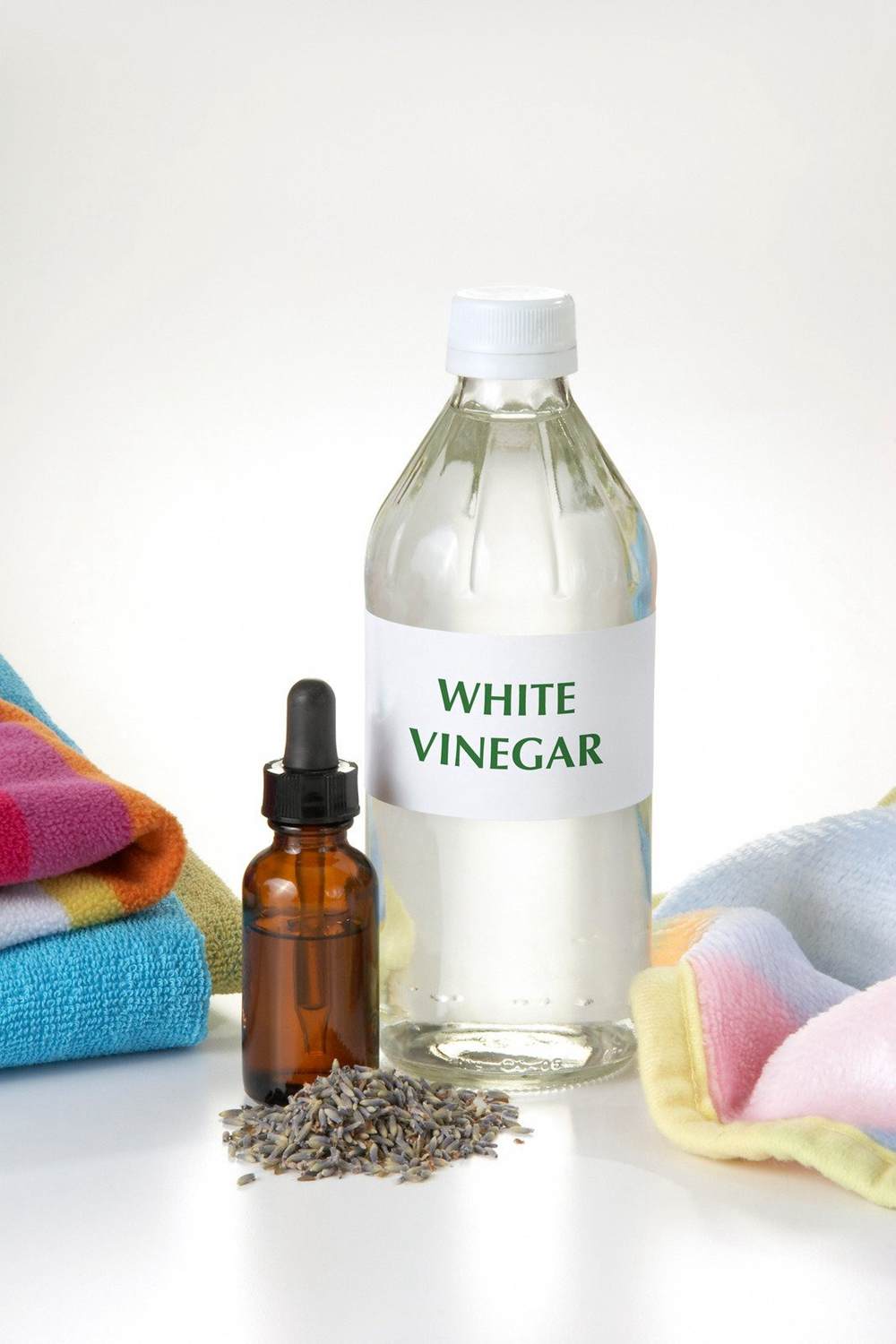
Fabric softener stains can be frustrating to deal with. The waxy, greasy residue can be difficult to remove from clothing and often leaves behind a lingering odor. With the right techniques and products, you can banish fabric softener stains for good. This complete guide will walk you through the causes of fabric softener stains, how to prevent them, and proven methods to remove stains from any type of fabric.
Table of Contents
What Causes Fabric Softener Stains?
Fabric softener is designed to coat fabric fibers to make clothes feel softer. However, the ingredients that create the smooth, silky feel can also leave behind stubborn stains. Here are some of the common causes of fabric softener stains:
1. Using Too Much Fabric Softener
Adding more fabric softener than recommended can lead to excess buildup on clothes. Most fabric softener bottles list the correct dosage per load. Using more than directed increases the chance of staining.
2. Transfer Stains
Wet, freshly washed clothes that contain fabric softener residue can transfer stains when they come in contact with other items in the laundry or clothes dryer. The fabric softener wipes off one garment onto the next. This often creates blotchy marks.
3. Agitation Issues
Vigorous agitation during the wash cycle can cause fabric softener to spread unevenly onto clothes. Weak agitation can also prevent proper rinsing to flush away excess softener. Both scenarios make stains more likely.
4. Overcrowded Loads
Loading too many clothes into a washing machine prevents proper cleaning and rinsing. The tightly packed fabrics trap fabric softener rather than allowing it to properly distribute and dissipate.
5. Heat Activation
The heat of a clothes dryer can cause fabric softener to spread across fabric fibers and become more concentrated in places. This activates the staining process. Air drying allows fresh stains to set in place.
How To Prevent Fabric Softener Stains
While the occasional fabric softener stain may be unavoidable, you can take proactive steps to prevent excessive buildup and staining:
- Follow dosage directions – Never exceed the recommended amount of fabric softener per load. Measure carefully.
- Load clothes properly – Clothes should have enough room to move freely in the washer. Overcrowding causes buildup issues.
- Use lower heat settings – High heat can accelerate fabric softener staining. Wash in cooler water when possible.
- Skip fabric softener on greasy stains – Soil release ingredients in fabric softener can set oily stains. Wash those garments first before adding softener.
- Avoid transfer staining – Wash and dry clothes with fabric softener separately from clothes without residue to prevent transfer stains.
- Check rinse cycle performance – Make sure your machine adequately rinses away all traces of fabric softener after the wash cycle completes.
- Switch products occasionally – Rotating between a couple different fabric softener brands can help avoid excessive buildup issues from fragrances, conditioners, and anti-static ingredients.
How To Remove Fabric Softener Stains

If you discover fabric softener stains on your clothes, don’t panic. There are many techniques you can try to remove sticky, greasy residues and restore your garments. Test stain removal methods first in an inconspicuous area to check for colorfastness and damage to delicate fabrics.
Baking Soda
Baking soda is mildly abrasive and alkaline, making it ideal for absorbing grease and loosening many types of stains.
To use:
- Sprinkle baking soda generously over the fabric softener stains.
- Rub it into the fabric with your fingers or an old toothbrush.
- Let sit for at least 15 minutes before brushing off and checking if the stain reduced.
- For heavier stains, make a paste with equal parts baking soda and water. Apply and let sit 1-2 hours before washing.
White Vinegar
The acidic nature of white vinegar helps break down the fatty components of fabric softener residue. It’s safe for most washable fabrics.
To use:
- Fill a spray bottle with undiluted white vinegar. Liberally spritz stains until saturated.
- For tougher stains, soak a cloth or paper towel in vinegar and apply directly.
- Once soaked, let sit at least 30 minutes before washing.
Dish Soap
Dish soap contains degreasing agents that tackle oily stains. It’s a handy spot treatment to keep in your laundry room.
To use:
- Apply a few drops of liquid dish soap directly onto the stained area.
- Gently rub the dish soap into the stain using your fingertips or an old toothbrush.
- Let soak 5-10 minutes then rinse soap away and check if stain reduced before washing.
Oxygen Bleach
Oxygen bleach uses sodium percarbonate to lift stains and brighten laundry. It’s chlorine-free and won’t degrade fabrics like chlorine bleach can over time.
To use:
- Make an oxygen bleach paste by mixing 1 tbsp oxygen bleach powder with just enough warm water to form a spreadable paste.
- Apply paste onto the stain and let sit for at least 1 hour.
- Rinse paste away and check if stain reduced before washing.
Borax
The alkaline pH of borax makes it useful for removing greasy, fatty stains. It works similarly to baking soda.
To use:
- Dissolve 1 tbsp borax in 2 cups hot water. Soak stained garments for 30 minutes to several hours.
- For spot treatment, mix to form a paste and apply directly onto stains before washing.
Step-By-Step Process For Removing Fabric Softener Stains
For best results, use a combination of techniques in the proper order to eliminate every trace of sticky residue. Follow these steps:
Step 1: Flush The Stain
Rinsing the fabric with cool water can help flush away any excess fabric softener from the surface fibers before applying stain treatments.
Step 2: Apply A Degreaser
Pre-treat the stain by rubbing in an oil-cutting agent like dish soap, baking soda, or borax paste. This helps break down and draw out the oily components.
Step 3: Soak In Vinegar
Spritzing white vinegar over the stain after degreasing helps further dissolve and detach any remaining residue.
Step 4: Scrub And Agitate
Use an old toothbrush or scrub brush to gently agitate the fabric while the degreasing and vinegar treatments soak in. This mechanical action boosts stain removal.
Step 5: Rinse And Check
Once you’ve scrubbed the treated stain, rinse the area with clean water to remove all solution. Inspect to see if the stain reduced or eliminated before washing.
Step 6: Wash As Usual
After pre-treating, wash the garment as usual with detergent and the warmest recommended water temperature to lift away any remaining traces of the stain.
Step 7: Avoid Heat Drying
Line dry or dry on the lowest heat setting to prevent heat from setting any lingering stain residue. The mechanical action of the dryer can also worsen stains.
Special Considerations For Different Fabrics
Although the stain removal process is generally the same, some fabrics require extra care when using certain chemicals and treatments:
- Silk – Avoid vinegar, bleach, and oxygen bleach. Use a mild dish soap and cool water only.
- Wool – Skip the vinegar and bleach steps. Use cool water and delicate detergents.
- Rayon – Limit soaking time in vinegar, bleach, or other acidic solutions to avoid damage.
- Spandex – Pretreat stains carefully and wash in cold water to prevent fabric damage.
- Leather – Wipe with damp cloth and dish soap very gently. Do not immerse leather in water.
Test all stain treatments first on hidden seams and edges when working with delicate fabrics. Adjust steps as needed to avoid harming the material.
Common Questions About Removing Fabric Softener Stains
Removing set-in greasy stains from fabric softener buildup may take some trial and error. Here are answers to some frequently asked questions:
1. Will laundry detergent remove fabric softener stains?
Standard laundry detergent alone often cannot fully remove set-in fabric softener stains, especially on higher heat settings. However, washing with detergent after pretreating helps lift residue during rinsing. Choose a detergent with added stain fighting enzymes for the best results.
2. Can I use chlorine bleach to remove fabric softener stains?
Chlorine bleach can help remove some fabric softener stains, but it also degrades and damages fabrics over time. It’s better to use oxygen bleach or borax for a gentler approach. Never use chlorine bleach on silk or wool. Always check care labels first.
3. What temperature water should I use?
For most fabrics, warm or hot water provides the best results when tackling fabric softener stains. But take care with silks, wools, spandex, rayon, and other delicate materials that require cooler water temperatures under 90°F.
4. How can I prevent white vinegar from damaging clothes?
Limit vinegar soaking time to 30 minutes for most fabrics and avoid using vinegar at all on silk or wool items. Rinse vinegar thoroughly before washing. Diluting with an equal amount of water can also help reduce potential damage to fabrics.
5. Why do stains reappear after washing?
If stains return after washing, it means the fabric softener residue was not fully removed. Repeat the pretreating process focusing on mechanical agitation by scrubbing and then wash using the warmest recommended water temperature.
Conclusion
Removing pesky fabric softener stains takes a bit of work, but your favorite clothes don’t have to be ruined or discarded. With the proper techniques and targeted stain fighting ingredients like vinegar, dish soap, and oxygen bleach, you can successfully tackle greasy buildup. Always test treatments first in hidden areas and adjust steps as needed to avoid damaging delicate fabrics. With some elbow grease and the comprehensive process outlined here, you’ll be able to redeem your laundry and rid it of those troublesome fabric softener stains for good.